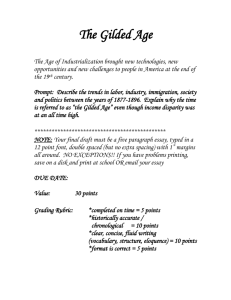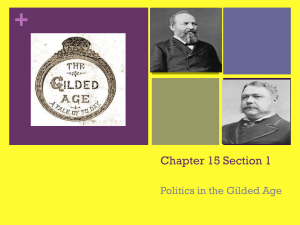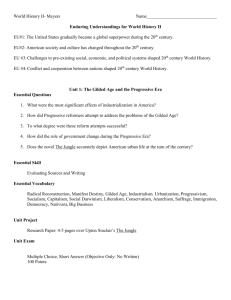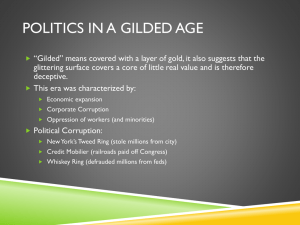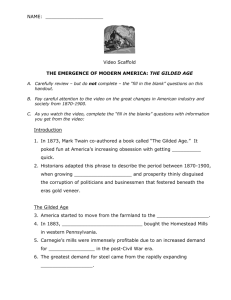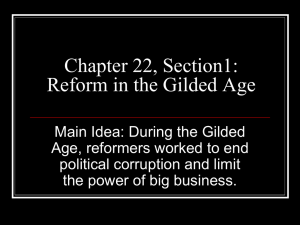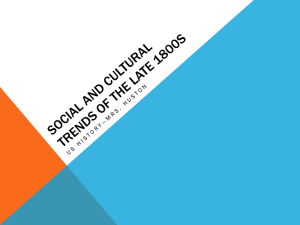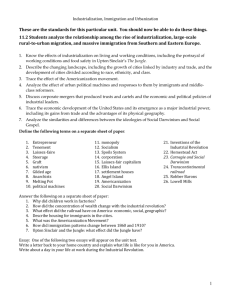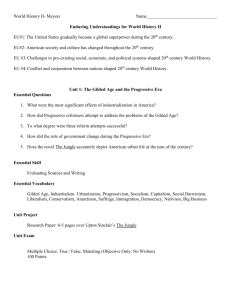United States History I: America Grows Up
advertisement
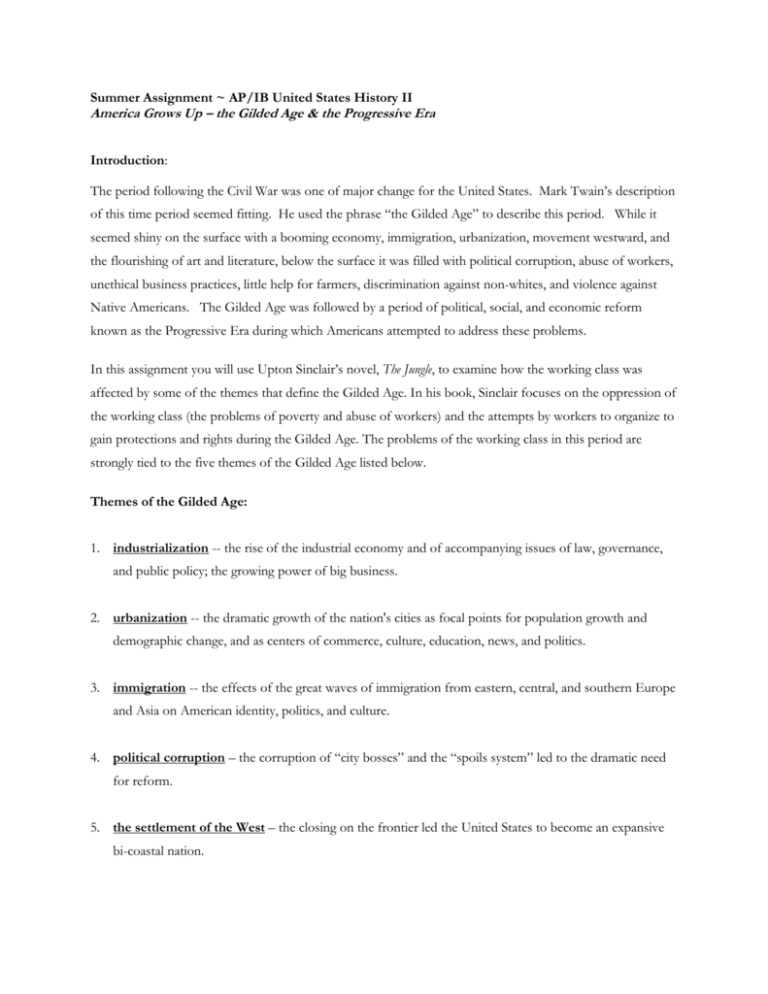
Summer Assignment ~ AP/IB United States History II America Grows Up – the Gilded Age & the Progressive Era Introduction: The period following the Civil War was one of major change for the United States. Mark Twain’s description of this time period seemed fitting. He used the phrase “the Gilded Age” to describe this period. While it seemed shiny on the surface with a booming economy, immigration, urbanization, movement westward, and the flourishing of art and literature, below the surface it was filled with political corruption, abuse of workers, unethical business practices, little help for farmers, discrimination against non-whites, and violence against Native Americans. The Gilded Age was followed by a period of political, social, and economic reform known as the Progressive Era during which Americans attempted to address these problems. In this assignment you will use Upton Sinclair’s novel, The Jungle, to examine how the working class was affected by some of the themes that define the Gilded Age. In his book, Sinclair focuses on the oppression of the working class (the problems of poverty and abuse of workers) and the attempts by workers to organize to gain protections and rights during the Gilded Age. The problems of the working class in this period are strongly tied to the five themes of the Gilded Age listed below. Themes of the Gilded Age: 1. industrialization -- the rise of the industrial economy and of accompanying issues of law, governance, and public policy; the growing power of big business. 2. urbanization -- the dramatic growth of the nation's cities as focal points for population growth and demographic change, and as centers of commerce, culture, education, news, and politics. 3. immigration -- the effects of the great waves of immigration from eastern, central, and southern Europe and Asia on American identity, politics, and culture. 4. political corruption – the corruption of “city bosses” and the “spoils system” led to the dramatic need for reform. 5. the settlement of the West – the closing on the frontier led the United States to become an expansive bi-coastal nation. Directions: Read Upton Sinclair’s The Jungle. Use the novel and the themes to accomplish the following tasks: 1. Select excerpts from the novel that show how the oppression of the working class is connected to each of the five themes above. Select one excerpt from The Jungle (list the page number and provide quotes) that best exemplifies EACH of the themes from the Gilded Age (industrialization, urbanization, immigration, political corruption, and the settlement of the west) and its connection to the problems of the working class. Explain how your selection offers insight into the theme and its effects on the working class. Hint: You should choose 5 excerpts, one per theme. Make sure you select the excerpts carefully. You want to choose ones that best exemplify the themes. 2. Identify and describe Upton Sinclair’s solution to the ills of the Gilded Age as explained in The Jungle. (You may use quotes when appropriate but be sure to explain them and their relevance.) 3. Complete a source evaluation for The Jungle. Identify the book’s origin and purpose. Then with reference to the origin and purpose assess the novel’s values and limitations. (See Evaluation of Sources in IB History on the next page for an explanation of these terms.) For more information on the book to help you answer #3, read Robert Cherny’s The Jungle and the Progressive Era, which can be found using the link below or on Ms. Brynildsen’s or Mr. Nicolosi’s webpage. http://www.gilderlehrman.org/history-by-era/politics-reform/essays/jungle-and-progressive-era This assignment is due on the first day of school. It should be typed and double-spaced. Evaluation of Sources in IB History: DETERMINING THE RELIABILITY OF A SOURCE All sources must be viewed critically. All are biased in some way. Document analysis involves asking questions about a source to determine its reliability. Use the steps below. _____________________________________________________________________________________ First determine the origin and purpose of the source. ORIGIN Who wrote it? When was it written? What type of source is it? (speech, photograph, etc.) Is it a primary or secondary source? PURPOSE Why was it written? Who was the intended audience? Then use the source’s origin and purpose to evaluate its values and limitations. VALUES What information can be learned from this source? How is it helpful to historians? What makes it reliable? LIMITATIONS What biases are present in the source? What prevents the source from being useful? What should the historian be wary of? What makes it unreliable?
